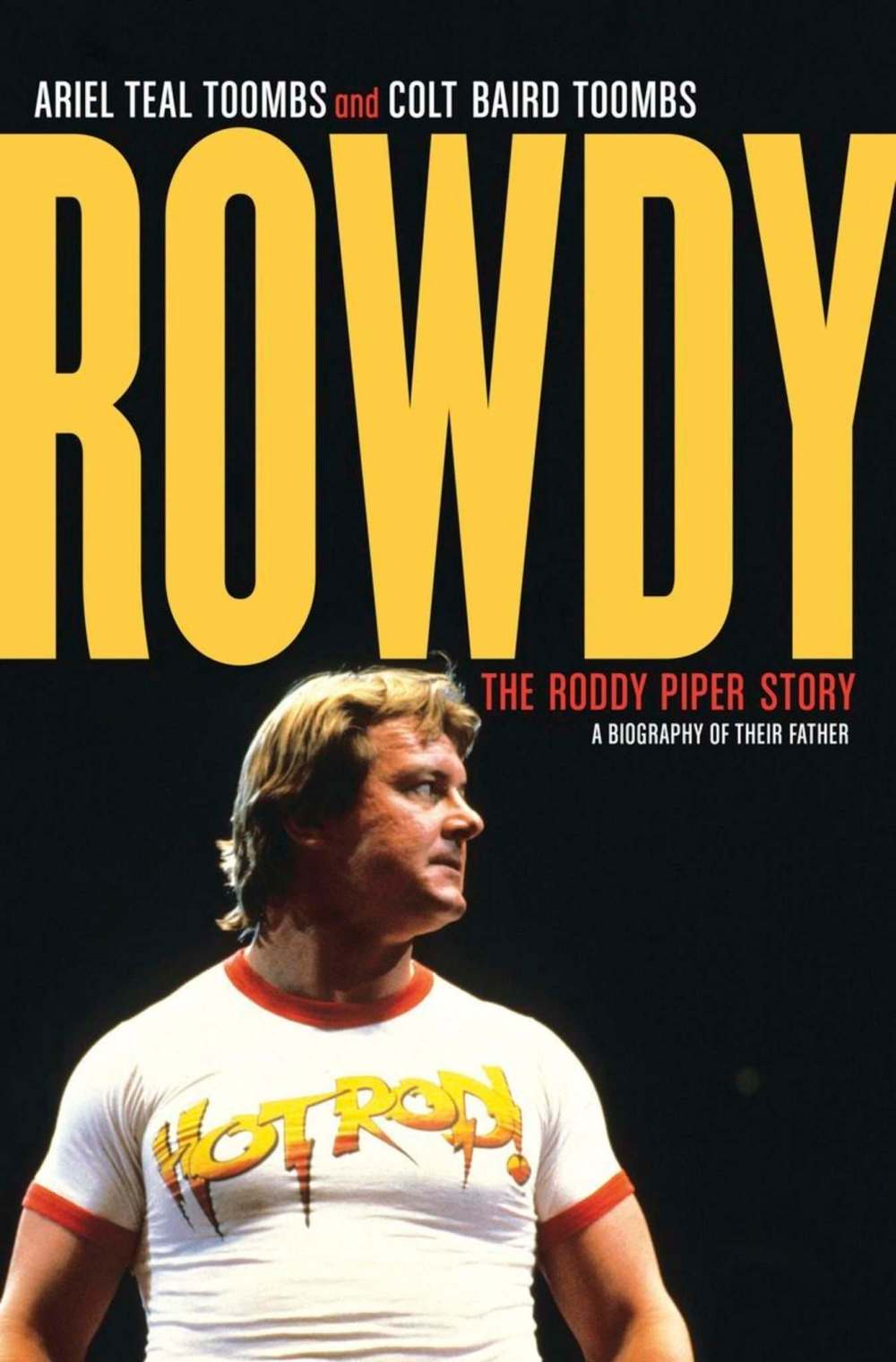Getting Rowdy
Piper bio highlights wrestler's life outside the ring
Advertisement
Read this article for free:
or
Already have an account? Log in here »
To continue reading, please subscribe:
Monthly Digital Subscription
$1 per week for 24 weeks*
- Enjoy unlimited reading on winnipegfreepress.com
- Read the E-Edition, our digital replica newspaper
- Access News Break, our award-winning app
- Play interactive puzzles
*Billed as $4.00 plus GST every four weeks. After 24 weeks, price increases to the regular rate of $19.00 plus GST every four weeks. Offer available to new and qualified returning subscribers only. Cancel any time.
Monthly Digital Subscription
$4.75/week*
- Enjoy unlimited reading on winnipegfreepress.com
- Read the E-Edition, our digital replica newspaper
- Access News Break, our award-winning app
- Play interactive puzzles
*Billed as $19 plus GST every four weeks. Cancel any time.
To continue reading, please subscribe:
Add Winnipeg Free Press access to your Brandon Sun subscription for only
$1 for the first 4 weeks*
*$1 will be added to your next bill. After your 4 weeks access is complete your rate will increase by $0.00 a X percent off the regular rate.
Read unlimited articles for free today:
or
Already have an account? Log in here »
Hey there, time traveller!
This article was published 05/11/2016 (3234 days ago), so information in it may no longer be current.
When professional wrestling legend “Rowdy” Roddy Piper, one of the greatest heels to ever work a crowd, died last year at the age of 61, he left behind some unfinished business.
In 2015, Piper began doing interviews for an autobiography he hoped would give his fans a true sense of who he was, separating the buried or lost facts from the fiction he’d built up around himself over decades working in the ring. When a heart attack took him before his time like so many other professional wrestlers before him, two of his children — daughter Ariel Teal Toombs, an actor, and Colt Baird Toombs, a former MMA fighter and active professional wrestler — took up the project. The two conducted more than 30 interviews with key figures from Piper’s professional and personal life, and dug through the mountains of performance footage and podcast content their father had created.
The resulting Rowdy: The Roddy Piper Story is sure to interest wrestling fans, from the casual to the die-hard. With a focus on who Piper was behind the scenes — and not the stories he spun to keep storylines popping professionally — even readers familiar with Roddy’s 2002 more “kayfabe”-friendly autobiography, In the Pit With Piper: Roddy Gets Rowdy, should find Rowdy full of fresh, previously unearthed details. For those who aren’t partial to the theatrics of the professional wrestling ring, Piper’s story may still be of interest, particularly for those interested in the superstar’s Manitoba connection.

Born in Saskatoon, Roderick George Toombs was the youngest of three children. Their father, Stanley, was a railway cop with CN who moved the family across Canada every couple years, with stops in The Pas, Dauphin, Port Arthur and Toronto before winding up in Winnipeg. Stanley was a heavy-handed, authoritarian father in the Victorian tradition, with little patience for Roderick’s rambunctiousness. The bullies in each subsequent whistle stop also took to practising their punches on young Roddy.
By the time he hit Winnipeg, Roderick was spending more time on the streets than beneath his father’s roof, relying on his wits and fists to keep him alive and out of jail. It is here in Winnipeg, in Al Tomko’s gym, that Roddy Piper the professional fighter was born. After a couple of close run-ins with the law and some reckoning with his own moral compass, Roddy turned his back on his past, dedicating everything he had to making it in the ring, grinding his way through bouts in gritty basements, community halls and bars to the top of the game and beyond.
Throughout, the Toombs siblings make no bones about their intent to honour their father’s legacy, not dissect it. As such, a critical biography Rowdy is not. The authors know their father was a complicated man with faults like any other, and they pull no punches when delving into the darker side of their father’s story: the long nights of boozing, doping and partying to dull the physical pain of his chosen profession, and the demons that haunted him from his youth.
While the anecdotes about Piper’s years as pro wrestling’s top heel — and his subsequent attempts to break out in Hollywood following a star turn as the lead in John Carpenter’s cult classic They Live — are interesting enough, where Rowdy really shines is in the stories the authors collect about the professional wrestling world of the 1970s and early ’80s. Before the pay-per-view and cable-beamed bouts between superstars came to TV sets across the world, the storylines and stars of the ring were contained by the regional fiefdoms of various connected promoters across North America, from Vince McMahon Sr.’s World Wide Wrestling Federation out of New York to Stu Hart’s Stampede Wrestling. Some of the few remaining major players from that era are interviewed at length, providing invaluable insight and detail into wrestling’s colourful, and far too often forgotten, history.
Sheldon Birnie is a reporter with Canstar Community News who enjoys seeing the heel really taking it to the babyface when the bell rings.



